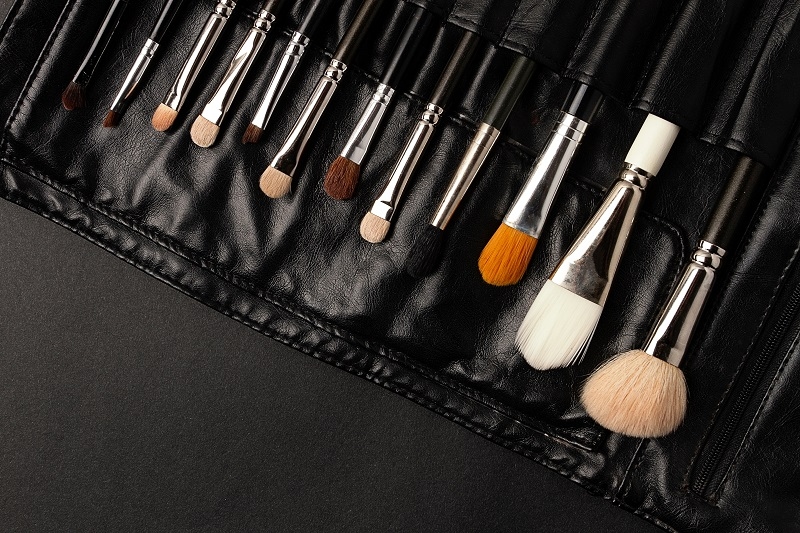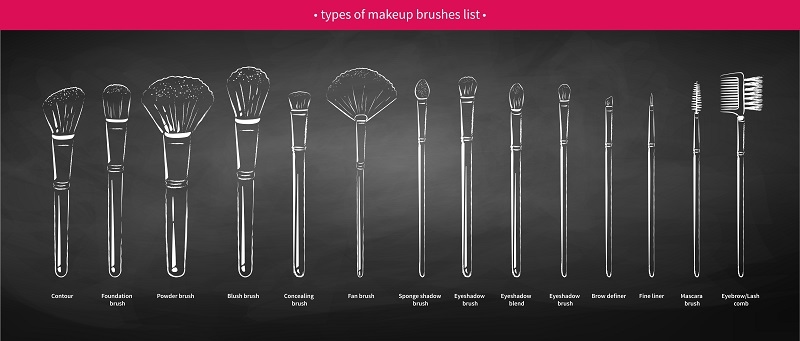
Makeup is an art form, and like any art form, your tools can make or break you. One of the very first critical steps in mastering makeup is becoming comfortable with the various types of makeup brushes and how they affect your application. With all the various options out there on the market today, it's easy to get confused. Don't worry, though—this is a guide specifically designed for beginners, so you can begin with the right brushes and technique.
From choosing the essential brushes for beginners to understanding the difference between a foundation brush vs sponge, this guide covers it all. You’ll also learn how to use a good eyeshadow blending brush, how to maintain your tools, and even how to find quality, affordable brush sets that suit your budget.
Brushes are always underappreciated. Fingers or random applicators are what most of us use to start with, but a good brush can completely elevate your makeup game. The right brush lets you apply products more evenly, gives you more control, and gives you a smoother blend. Knowing the numerous types of makeup brushes and what they do lets you have a better, flawless look.
No matter what dramatic eye shadow or light foundation you're applying, the right brush is the difference between blotchy and brilliant. That's why choosing your brushes with care is essential, especially if you are assembling your first makeup kit.
When starting out, it's helpful to get familiar with the most widely used types of makeup brushes. These ones give you all your must-haves, from face to eyes.
The most essential item in any kit is the base brush. This brush is generally flat or slightly curved and packed with thick bristles. It enables you to distribute liquid or cream foundation evenly. Foundation brush vs sponge, when comparing the two, brushes tend to provide fuller coverage, while sponges deliver a light, dewy look.
Another must-have brush is the powder brush. Soft, big, and fluffy, it's perfect for dusting powder on top of your base without moving around your foundation. The next is the blush brush—less harsh bristles than the powder brush, smaller in size, and it just takes the right amount of product to give cheeks a rosy-looking glow.
In order to contour, the angled contour brush is handy for lining up cheekbones, jawlines, and noses. It is not necessarily one of those absolute essentials for a beginner, but it is definitely well worth having if you like sculpting your features out. Other than that, you may want to have a small tapered brush to put highlighter on the high points of your face.
Naturally, no kit would be complete without an eyeshadow blend brush. The blending brush is a gentle, puffy brush used to mix different colors of eyeshadow together for a smooth look. While flat eyeshadow brushes will place concentrated color, blending brushes will transition and diffuse color so that there's not a harsh line.
Another handy brush is the angled brow or eyeliner brush. Sharp and thin, it's perfect for crafting eyebrows or defining with gel eyeliner. For the lips, a small, hard lip brush helps to achieve clean, defined lines and even lipstick.
If you’re just starting your makeup journey, don’t feel the need to buy every single brush available. Focus on getting a few essential brushes for beginners that cover all the key steps in your routine.
The five must-have brushes are: a foundation brush (or sponge), a powder brush, an eyeshadow blending brush, a blush brush, and an angled brush for brows or eyeliner. These allow you to do a complete makeup look from start to finish.
Later, as you become used to it, you can expand to include contour brushes, highlighter brushes, and fine-detail eye brushes. But when you start, it is better to keep it simple, as it isn't as daunting.

One of the things most newbies wonder is whether they should use their foundation with a brush or a sponge. They both get the job done, but they yield a different result.
A foundation brush gives you greater coverage and buffs the product into your skin. It's great for uneven skin tone or if you want more control. A sponge works well for a more natural, skin-like finish. Wet, it forces the product into the skin and is usually easier for newbies to put on without streaks.
When you are comparing a foundation brush vs sponge, consider your skin type, the finish, and coverage you want. There is no one answer—you might love one some days and the other for a different look.
If there's one brush that creates magic over your eye makeup, it's the eyeshadow blending brush. It smoothes out harsh lines, makes blending different shades easy, and provides a professional touch to your appearance.
Learning how to clean makeup tools is just as important as learning how to use them. Dirty brushes are full of bacteria, cause breakouts, and affect makeup performance.
To wash your brushes, use mild soap and lukewarm water or a gentle brush cleaner.
Having a proper cleaning routine will not only protect your skin but also preserve the functionality of your beginner essential brushes.
Quality brushes don't need to be expensive. Nowadays, there are plenty of brands providing affordable sets of brushes that work beautifully and suit first-time users. Such sets usually contain all the beginner-friendly brushes needed—foundation, powder, blush, blending, and liner brushes—at an affordable price point compared to high-end brands.
When you do shop, notice brush handles as well—choose ergonomically formed ones that will not slip from your grasp and are easily washed. You don't need to spend a fortune on a good beginner kit that will suffice.
Whether you prefer the full coverage of a brush or the dewy appearance of a sponge, the foundation brush vs. sponge debate is ultimately a matter of personal preference. Just don't forget your trusty eyeshadow blending brush, since no eye look is complete without one. And don't forget, even with good brushes, cleanliness is next to brush-ness, so learning how to clean makeup brushes is important.
Creating your brush kit doesn't need to happen overnight. Start with some beginner brushes, learn to use and clean them, and then add on from there as your skill builds. Learning about different kinds of makeup brushes and what they're used for can enable you to use makeup in more innovative ways and with greater confidence.
As a beginner, it's easy to rush out and purchase every brush you see. But if you continue to learn using the basics and attempt to find value brush sets, you can build up a good, solid kit that performs without having to take out a second mortgage. Once you have the good brushes, you're already halfway to makeup mastery.
This content was created by AI